Outcome
On 14 October 1834, a large majority of the congregation of the Dutch Reformed Church in Ulrum, signed the Act of Secession and Return" and broke away from the State Church. [3] [7]
The Secession would play a role in the 1857 Dutch Reformed Church split between the Reformed Church in America and the Christian Reformed Church in North America. There were three major principles that went along with the split. They withdrew from the "false" church, gave loyalty to the three reforms and the Order of Dort, and wanted to make connections with other churches with the same values and beliefs. Various churches came and left the movement, but the ones that stayed united under the Christian Reform Church.
Many of those trying to secede were treated poorly so they looked for a way to partake in their religion in peace. Some reformers decided it was time to move and so migrated to America, [3] with some going to New York and Michigan. In 1857, the Christian Reformed Church was created in Grand Rapids, Michigan. After more trouble and the leaders not accepting and wanting to preach certain aspects, they formed the Christian Protestant church. These two denominations flourished when a spike in Dutch immigration occurred at the end of the Second World War.
The Great Awakening was a series of religious revivals in American Christian history. Historians and theologians identify three, or sometimes four, waves of increased religious enthusiasm between the early 18th century and the late 20th century. Each of these "Great Awakenings" was characterized by widespread revivals led by evangelical Protestant ministers, a sharp increase of interest in religion, a profound sense of conviction and redemption on the part of those affected, an increase in evangelical church membership, and the formation of new religious movements and denominations.

Afrikaner Calvinism is a cultural and religious development among Afrikaners that combined elements of seventeenth-century Calvinist doctrine with a "chosen people" ideology based in the Bible. It had origins in ideas espoused in the Old Testament of the Jews as the chosen people.
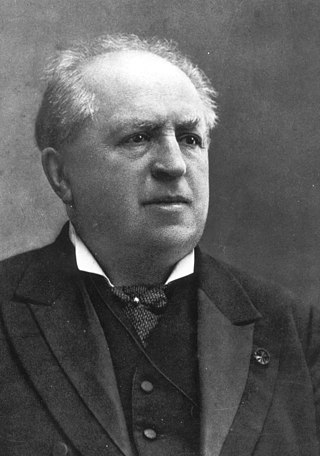
Abraham Kuyper was the Prime Minister of the Netherlands between 1901 and 1905, an influential neo-Calvinist pastor and a journalist. He established the Reformed Churches in the Netherlands, which upon its foundation became the second largest Reformed denomination in the country behind the state-supported Dutch Reformed Church.

The Christian Reformed Church in North America is a Protestant Calvinist Christian denomination in the United States and Canada. Having roots in the Dutch Reformed Church of the Netherlands, the Christian Reformed Church was founded by Dutch immigrants in 1857 and is theologically Calvinist.
The Dutch Reformed Church was the largest Christian denomination in the Netherlands from the onset of the Protestant Reformation in the 16th century until 1930. It was the original denomination of the Dutch royal family and the foremost Protestant denomination until 2004. It was the larger of the two major Reformed denominations, after the Reformed Churches in the Netherlands was founded in 1892. It spread to the United States, South Africa, Indonesia, Sri Lanka, Brazil, and various other world regions through Dutch colonization. Allegiance to the Dutch Reformed Church was a common feature among Dutch immigrant communities around the world and became a crucial part of Afrikaner nationalism in South Africa.
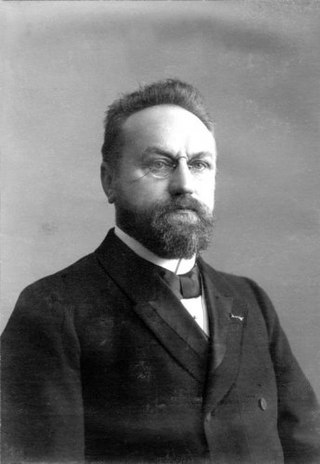
Herman Bavinck was a Dutch Calvinist theologian and churchman. He was a significant scholar in the Calvinist tradition, alongside Abraham Kuyper, B. B. Warfield, and Geerhardus Vos.

The history of religion in the Netherlands has been characterized by considerable diversity of religious thought and practice. From 1600 until the second half of the 20th century, the north and west had embraced the Protestant Reformation and were Calvinist. The southeast was predominately Catholic. Associated with immigration from Arab world of the 20th century, Muslims and other minority religions were concentrated in ethnic neighborhoods in the cities.
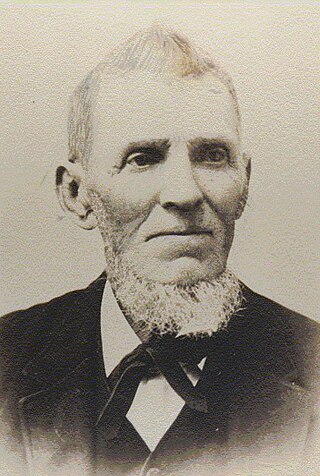
Gijsbert Haan or alternate spelling Gysbert Haan was the leader in the 1857 Secession of Dutch-Americans from the Reformed Church in America, and the creator of the Christian Reformed Church in the United States and Canada.
James Madison Pendleton (1811–1891) was a leading 19th-century American Baptist preacher, educator and theologian.
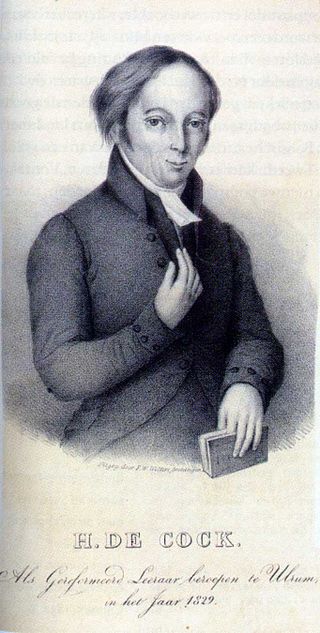
Hendrik de Cock was a Dutch minister responsible for the 1834–35 Dutch Reformed Church split due to his incarceration and suspension from office for his Calvinist convictions.
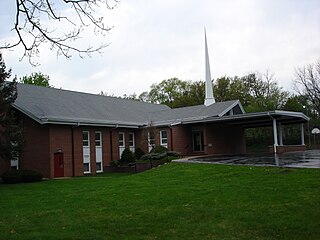
The Netherlands Reformed Congregations is a conservative Calvinist denomination with congregations in Canada, the United States and Bolivia. It is affiliated with the Reformed Congregations in the Netherlands.
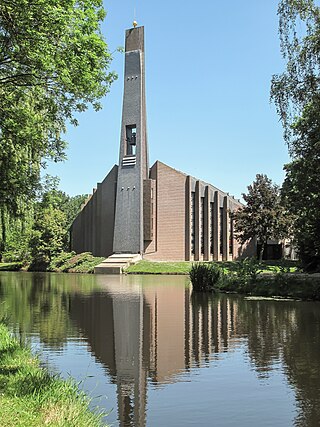
The Christian Reformed Churches in the Netherlands is a Protestant church in the Netherlands.

The Free Reformed Churches of North America (FRCNA) is a theologically conservative federation of churches in the Dutch Calvinist tradition with congregations in the United States and Canada. It officially adopted its current name in 1974.
The Groningen Theology was a theological movement in the Dutch Reformed Church of the mid-nineteenth century that sought a middle way between theological rationalism and orthodox Calvinism. The innovators of the Groningen theology—Petrus Hofstede de Groot (1802-1886), Johan Frederik van Oordt (1794-1852), and Louis Gerlach Pareau (1800-1866)—were professors at the Royal University of Groningen who met weekly with friends and pastors starting in 1835 to study the New Testament. Professor Willem Muurling (1805-1882) joined the society after Van Oordt accepted a chair at Leiden in 1839. The Groningen theologians attracted national attention above all through their journal, Waarheid in Liefde, which ran from 1837 to 1872.
The 1886 Dutch Reformed Church split, also known as the Doleantie, was the name of a prominent schism in the Dutch Reformed Church that took place in 1886 and was led by a renowned minister, Abraham Kuyper. The Doleantie was not the first schism in the Dutch Reformed Church. Another schism, the Secession of 1834 (Afscheiding van 1834), had led to the formation of the Christian Reformed Church in the Netherlands (Christelijke Gereformeerde Kerk in Nederland).
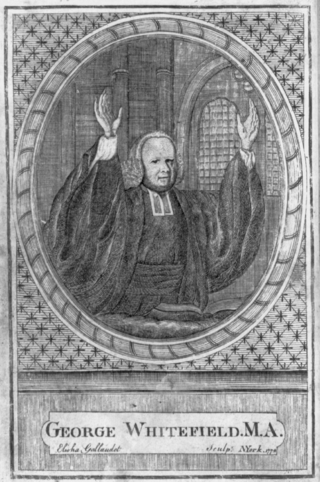
Christianity in the 18th century is marked by the First Great Awakening in the Americas, along with the expansion of the Spanish and Portuguese empires around the world, which helped to spread Catholicism.
Christian revivalism is increased spiritual interest or renewal in the life of a Christian church, congregation or society with a local, national or global effect. This should be distinguished from the use of the term "revival" to refer to an evangelistic meeting or series of meetings. Proponents view revivals as the restoration of the church to a vital and fervent relationship with God after a period of moral decline.
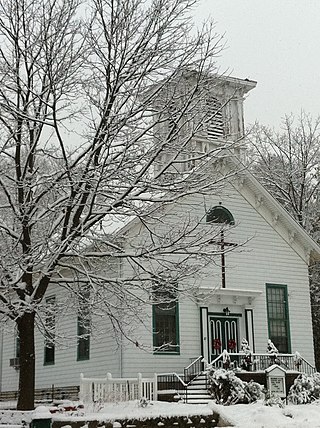
The Monsey Church is the colloquial name of a historic Reformed Christian church in the hamlet of Monsey, town of Ramapo, in southern Rockland County, New York, the official name of which, since December 6, 2000, is New Hope Christian Church. The church was founded in 1824 as the True Reformed Dutch Church of West New Hempstead and later became known as the Monsey Christian Reformed Church. The church owns a historic cemetery adjacent to the site of its first meeting house and briefly operated a private Christian school in the 1950s and '60s. Today the church is a member congregation of the Presbyterian Church in America (PCA). It is the only remaining church that was once part of the True Reformed Dutch Church.

Presbyterianism has had a presence in the United States since colonial times and has exerted an important influence over broader American religion and culture.

Roelof Harms Smit was a Dutch-American minister. Smit ministered a congregation in Drenthe, Michigan in the mid-1800s, which led to a notable secession in the history of the Christian Reformed Church of North America.












